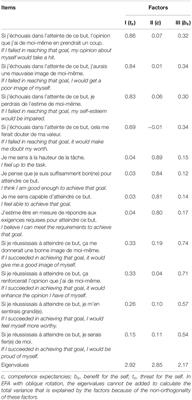Approach-avoidance conflict is a type of psychological conflict that occurs when an individual is faced with a decision about whether to approach or avoid a particular situation or object. This type of conflict can be seen in a variety of situations, including decisions about work, relationships, and personal goals.
One common example of approach-avoidance conflict is the decision to pursue a new job opportunity. On the one hand, the individual may be attracted to the potential benefits and rewards of the new job, such as a higher salary or more challenging work. On the other hand, they may also be hesitant to make the change, perhaps because they are comfortable in their current job or because they are afraid of the unknown.
Another example of approach-avoidance conflict is the decision to enter into a romantic relationship. On the one hand, the individual may be attracted to the potential happiness and fulfillment that a relationship could bring. On the other hand, they may also be hesitant to enter into a relationship due to fear of rejection or commitment.
In order to resolve approach-avoidance conflict, individuals must weigh the pros and cons of each option and decide which one is most beneficial for them. This can be a difficult process, as it requires careful consideration of both the potential rewards and the potential risks of each decision.
There are several psychological theories that attempt to explain approach-avoidance conflict and how it is resolved. One theory is the dual-process model, which suggests that there are two separate processes at work in decision-making: a rational, deliberative process and an automatic, emotional process. According to this theory, individuals use both processes when making decisions, and the balance between the two can influence the outcome.
Another theory is the self-regulation model, which emphasizes the role of personal goals and values in decision-making. According to this theory, individuals strive to achieve a balance between their approach and avoidance goals, and the decision to approach or avoid a particular situation or object is based on which option aligns better with their goals and values.
Overall, approach-avoidance conflict is a common and complex psychological phenomenon that can have a significant impact on an individual's decision-making process. By understanding the underlying psychological processes involved in this type of conflict, individuals can better navigate their own decisions and achieve their goals.
Conflicts: Notes on 3 Types of Conflicts

Lora was facing what is known as an avoidance-avoidance conflict, whereby an individual wants to avoid making a decision because the alternatives are objectionable. If we are looking at a mathematical problem, the basic theory, formula we are going to use will be the approach. What are the 3 kinds of conflict? In total conflict may be a friction between two desires, motives, needs or values, finally the stronger one will take upper hand. These forces may disturb the individual causing lot of mental turmoil. Unfortunately, even with the state of modern health, she knew that at age 65 she might start to develop some medical problems.
What is an approach

Here, compromise with the situation is the only alternative solution to overcome stress resulting from conflict. Firstly, it is important to establish the fact of such a conflict and determine its type as well as the cause main contradiction. For example, a student who cannot face examination or failure may try to rim away from home, but the love and affection of the parents or financial problems may prevent him from doing so. In the case of avoidance-avoidance conflict, a person is torn by undesirable, unpleasant alternatives. This is called multiple approach avoidance conflict. This involves the individual assessing for themselves whether the negative aspects outweigh the positives. Such conflicts are not so harmful, because after selecting one, the other one automatically subsides or loses its importance to him.

Alternatively, this conflict is resolved by giving up one of the goals. The act of approaching: the approach of night. Because in this type of conflict a person is both attracted and repelled by the same goal object. Some people may resort to other means to get relief from tension, such as day dreaming, taking alcohol, chain smoking, suicide, etc. Although he was going to conduct a biopsy to make sure, he was concerned that she might have breast cancer. Here the desires which cannot be satisfied at conscious level are repressed to unconscious level as a mechanism of escaping. For example, a person has two attractive job offers and he has to choose any one of them- tension arises.

The step by step way which we use to solve the problem is our method. Some conflicts are of great danger to mental health of the individual. Suppose a woman is engaged to be married. Here the individual is caught between two repelling threats, fears or situations. Such type of conflict is diagrammatically represented in Figure 4. Lewin has described three types of goal conflicts Kurt Lewin 1948 , They are Approach-Approach Conflict, Approach-Avoidance Conflict, and Avoidance-Avoidance Conflict. Though these are the coping strategies at individual level, people facing conflicts may help themselves by examining the causes of conflicts clearly, trying to choose the best alternative, early decision making, etc.





